- About MAA
- Membership
- MAA Publications
- Periodicals
- Blogs
- MAA Book Series
- MAA Press (an imprint of the AMS)
- MAA Notes
- MAA Reviews
- Mathematical Communication
- Information for Libraries
- Author Resources
- Advertise with MAA
- Meetings
- Competitions
- Programs
- Communities
- MAA Sections
- SIGMAA
- MAA Connect
- Students
- MAA Awards
- Awards Booklets
- Writing Awards
- Teaching Awards
- Service Awards
- Research Awards
- Lecture Awards
- Putnam Competition Individual and Team Winners
- D. E. Shaw Group AMC 8 Awards & Certificates
- Maryam Mirzakhani AMC 10 A Awards & Certificates
- Two Sigma AMC 10 B Awards & Certificates
- Jane Street AMC 12 A Awards & Certificates
- Akamai AMC 12 B Awards & Certificates
- High School Teachers
- News
You are here
Mathematical Treasure: Voltaire's Élémens de la philosophie de Newton
Famous as an Enlightenment philosopher, poet, and writer, Voltaire also studied science and mathematics, including works by Newton. His interest in these topics may have been influenced by his mistress Émilie du Châtelet, who later was known for her translation and commentary of Newton’s Principia. (For images of her translation and commentary, visit the page Mathematical Treasure: Émilie du Châtelet’s Principes Mathématiques.) Voltaire’s work, Élémens de la philosophie de Neuton : mis à la portée de tout le monde, was first published in 1738 in French in Amsterdam. An Italian version was published in 1741, and a revised French edition in 1773 (about five years before the death of Voltaire). This book contributed to the spread of Newton’s ideas on gravity, optics, and light to France, by making them more understandable and accessible. Below is an image of the title page from the 1738 edition.
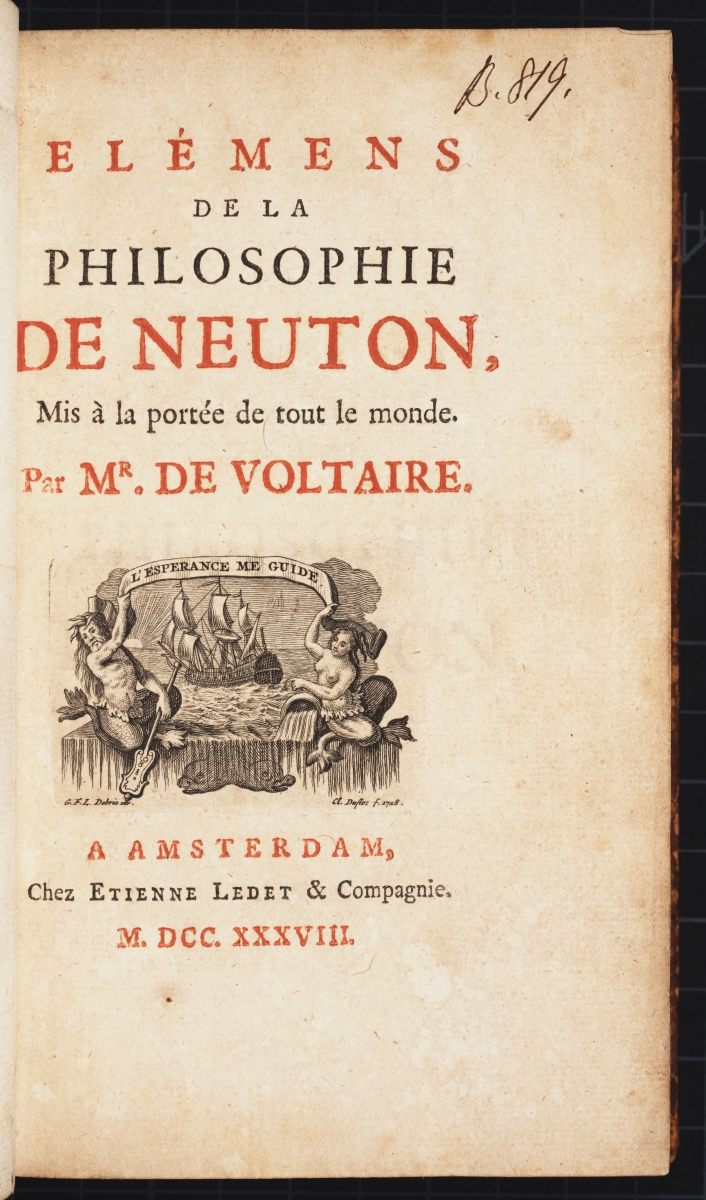
Notice that the title page lists Voltaire’s name as the sole author. There is speculation that if the book had been written in a different culture and age that Émilie du Châtelet would have been listed as a co-author. Preceding the title page, there is a portrait of Voltaire and a scene depicting Voltaire writing at a table. He is receiving inspiration from a beautiful goddess (Émilie) who is holding a mirror that reflects ideas down from Newton in the clouds. Images of these two frontispiece pages are below.
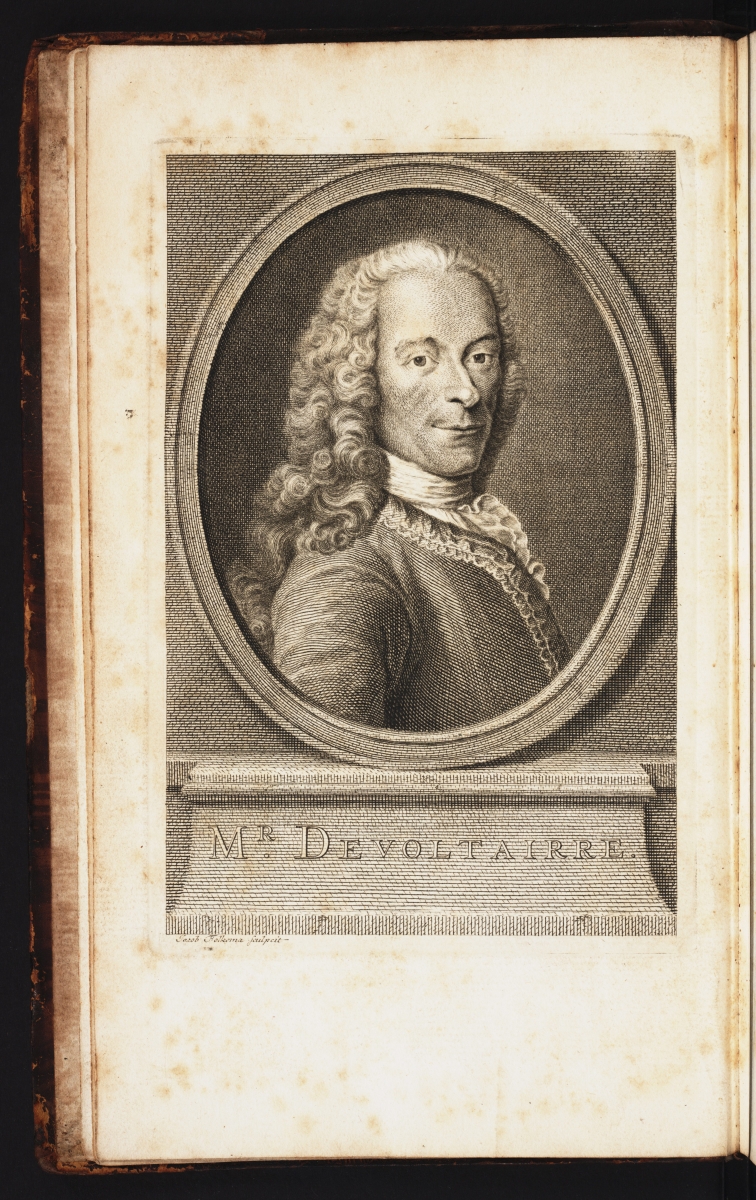
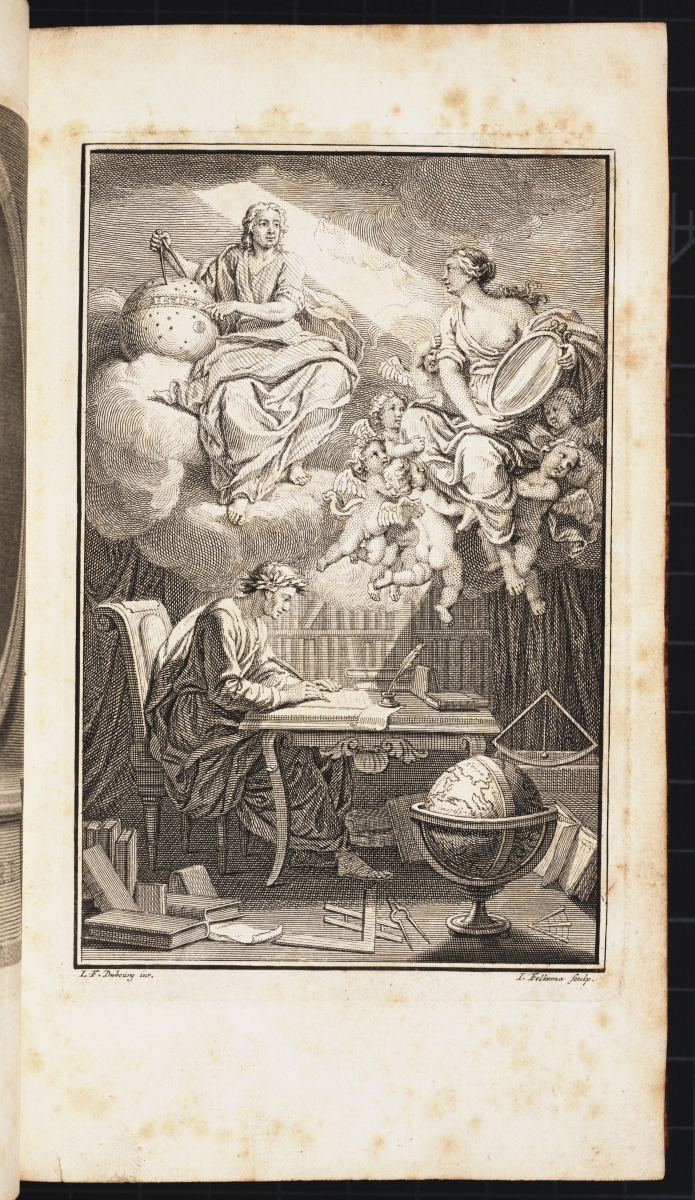
Voltaire explicitly gave credit to Émilie du Châtelet in an acknowledgment and foreword. Images of the first page of each of these are below.
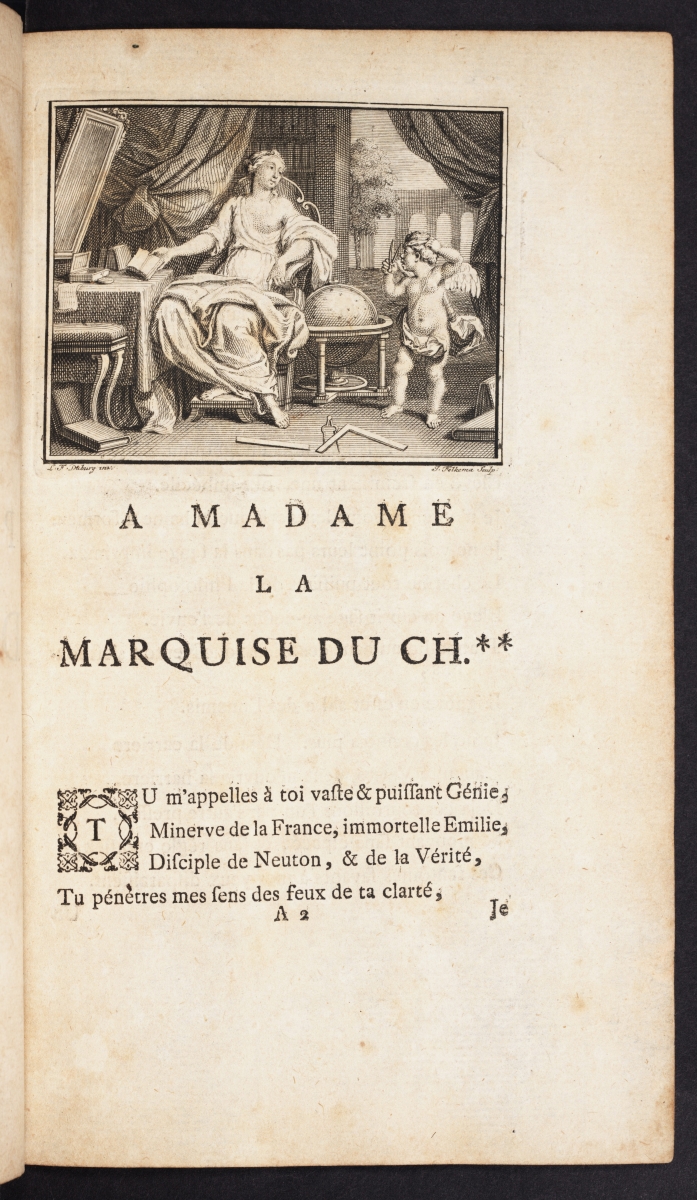
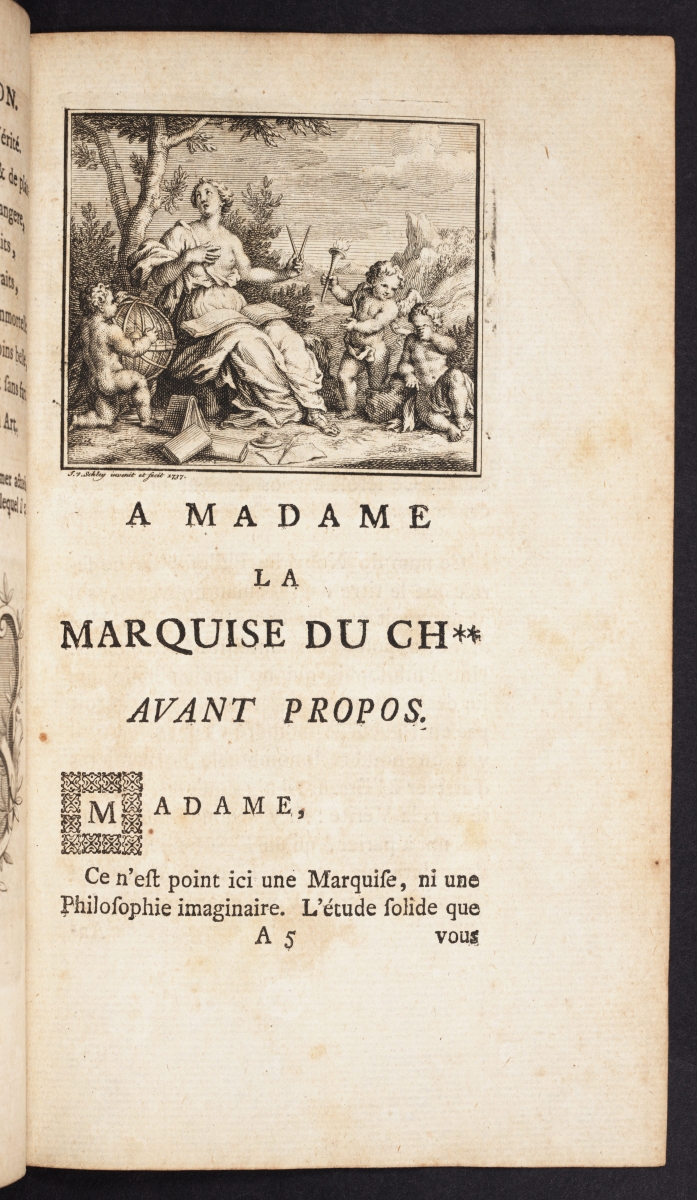
The next images are from a discussion of the angles involved when a ray of light passes through a crystal and how white light is broken up into colors when it passes through a prism.
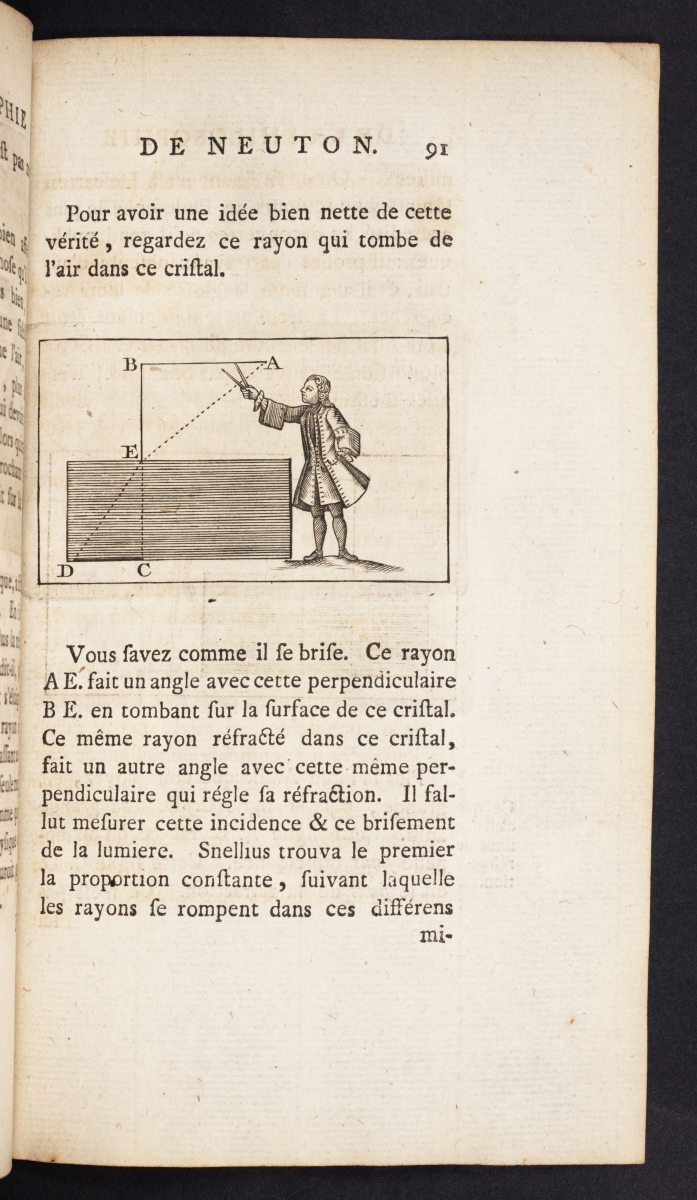
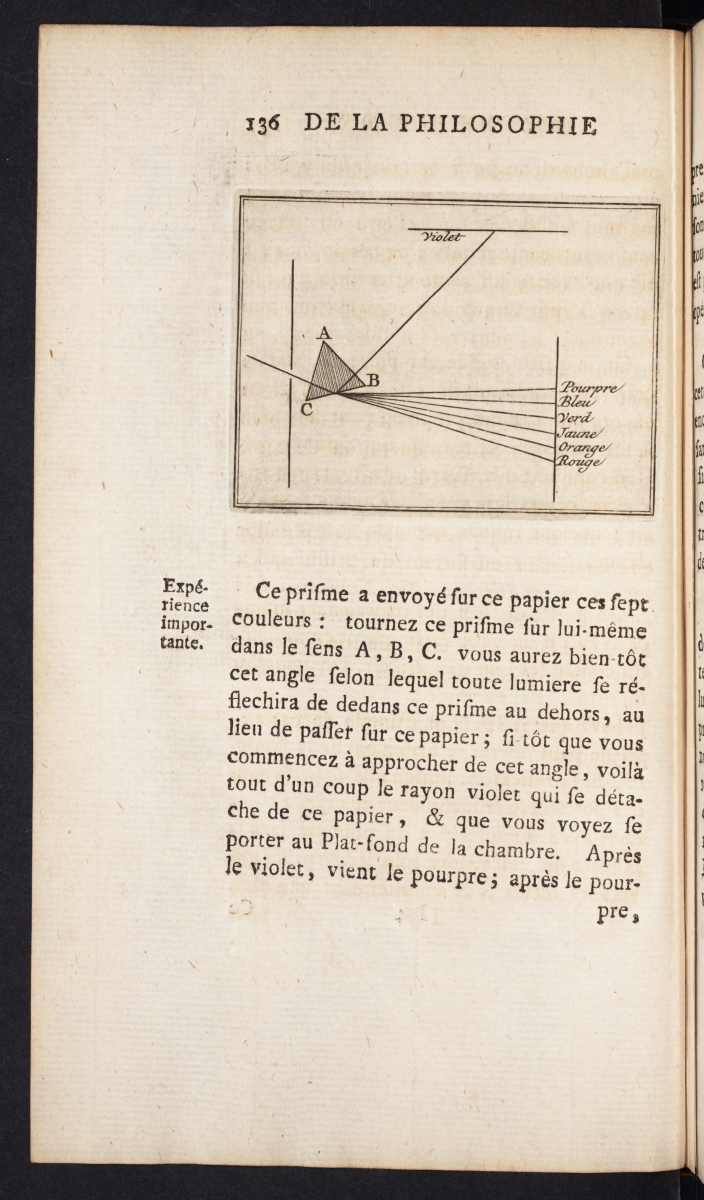
Émilie du Châtelet wrote a review of Voltaire’s Élémens de la philosophie de Neuton which appeared in the September 1738 issue of the Journal des Sçavans under the heading “De Cirey en Champagne”. Voltaire and Émilie spent many years together at her estate called Cirey, conducting experiments, reading, writing, and hosting other researchers. Three years later, in 1741, she published a book synthesizing the ideas of Descartes, Leibniz, and Newton. Images from this work can be found on the page Mathematical Treasure: Émilie du Châtelet’s Institutions de Physique.
The call number for the 1738 French edition of Voltaire’s Elements of the Philosophy of Newton is QC19.V64 1738.
Images in this article are courtesy of the Linda Hall Library of Science, Engineering & Technology and used with permission. The Linda Hall Library makes available all existing digital images from its collection that are in the public domain to be used for any purpose under the terms of a Creative Commons License CC by 4.0. The Library’s preferred credit line for all use is: “Courtesy of The Linda Hall Library of Science, Engineering & Technology.”
References
Arianrhod, Robyn. Seduced by Logic: Émilie du Châtelet, Mary Somerville, and the Newtonian Revolution. Oxford, 2012.
Bodanis, David. Passionate Minds: The great love affair of the Enlightenment, featuring the scientist Emilie du Châtelet, the poet Voltaire, sword fights, book burnings, assorted kings, seditious verse, and the birth of the modern world. Crown Publishers, 2006.
Zinsser, Judith P. Emilie du Chatelet: Daring Genius of the Enlightenment. Penguin Books, 2006.
Cynthia J. Huffman (Pittsburg State University), "Mathematical Treasure: Voltaire's Élémens de la philosophie de Newton," Convergence (June 2018)




